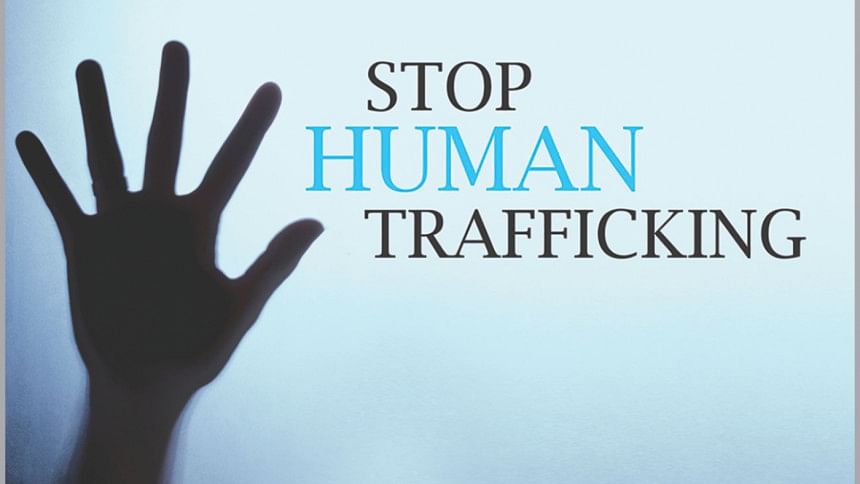Combating trafficking in persons

Trafficking in persons is one of the most atrocious crimes and gross violation of human rights in the present world that exploits women, children and men for various purposes including forced labour and sex. Today trafficking has developed into a widespread criminal practice which is given equal status of “modern form of slavery” and can also be treated a trade in people for the purpose of forced labor, sexual abuse, slave trade, commercial sexual exploitation and involves the restriction of movement of people from one place to another.
According to section 3(1) of Human Trafficking Deterrence and Suppression Act (2012), “Human trafficking” means the selling or buying, recruiting or receiving, deporting or transferring, sending or confining or harboring either inside or outside of the territory of Bangladesh of any person for the purpose of sexual exploitation or oppression, labor exploitation or any other form of exploitation or oppression by means of:
(a) threat or use of force; or (b) deception, or abuse of his or her socio-economic or environmental or other types of vulnerability; or (c) giving or receiving money or benefit to procure the consent of a person having control over him or her.
At the universal level, the UN Convention Against Transnational Organized Crime (2000) governs as the principal anti-trafficking law. ILO estimates that 21 million people around the globe are subjected to exploitation and forced labour due to trafficking. Human trafficking through sea-route among in its various forms has become a catchphrase in Bangladesh that has tensed up the nerve of common people in recent years. It is treated a 'high profit‐low risk' crime that viciously hampers the right to life and liberty of its victims. Extreme poverty, low life standard, and frustration resulting from unemployment force people to be trafficked in search of employments elsewhere. Using undue influence, threat, fraud, coercion and other horrible means, traffickers prey on the vulnerable.
Bangladesh has ratified to the UN Convention Against Transnational Organized Crime (2000) in 2011 and has taken the issue of trafficking seriously. It has enacted several other legislations since 1933. In order to strengthen protection and prosecution, the government has enacted Human Trafficking Deterrence and Suppression Ordinance (2011) and Human Trafficking Deterrence and Suppression Act (2012). Some action plans have also been initiated by the government to protect the women and children from trafficking.
Attempts to combat trafficking in Bangladesh consist of three dimensions: (1) Prevention of trafficking at its source by addressing the root causes of the crime; (2) Providing redress to the trafficked persons through viable sustainable livelihood options; and (3) Efforts on the part of the criminal justice system to prosecute and penalise the traffickers.
According to the Global Report on Trafficking in Persons (2016), many States have criminalised most forms of trafficking as set out in the UN Trafficking in Persons Protocol. The number of States doing this has increased from 33 to 158 between 2003 and 2016. Such an exponential increase is welcomed and it has helped to assist the victims and to prosecute the traffickers. The US Human Trafficking Report (2017) reveals that the government of Bangladesh has demonstrated significant efforts during the reporting period through finalising and adopting the implementing rules for the Prevention and Suppression of Human Trafficking Act (2012) in January 2017 and drafting an implementation roadmap for the 2015 - 2017 national action plans.
The writer is an Advocate, Supreme Court of Bangladesh.

 For all latest news, follow The Daily Star's Google News channel.
For all latest news, follow The Daily Star's Google News channel. 



Comments